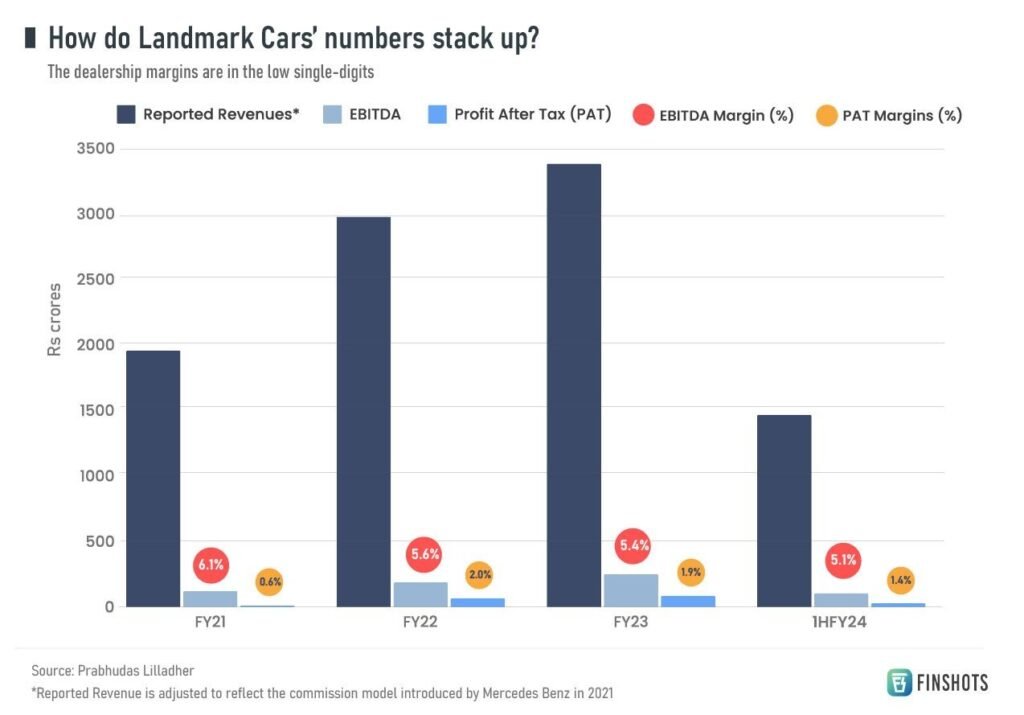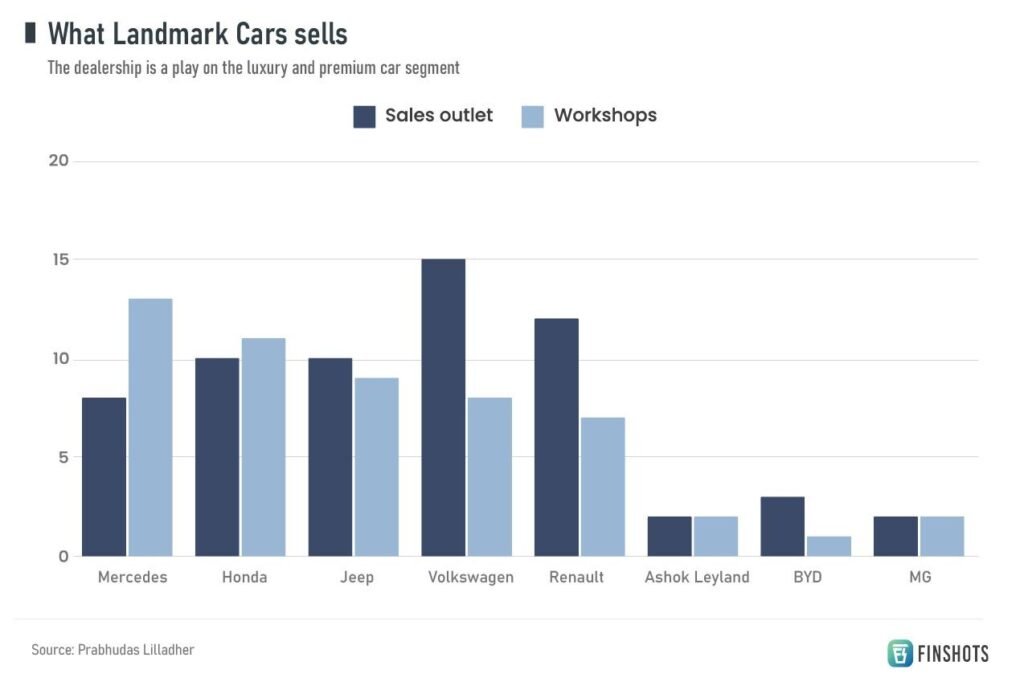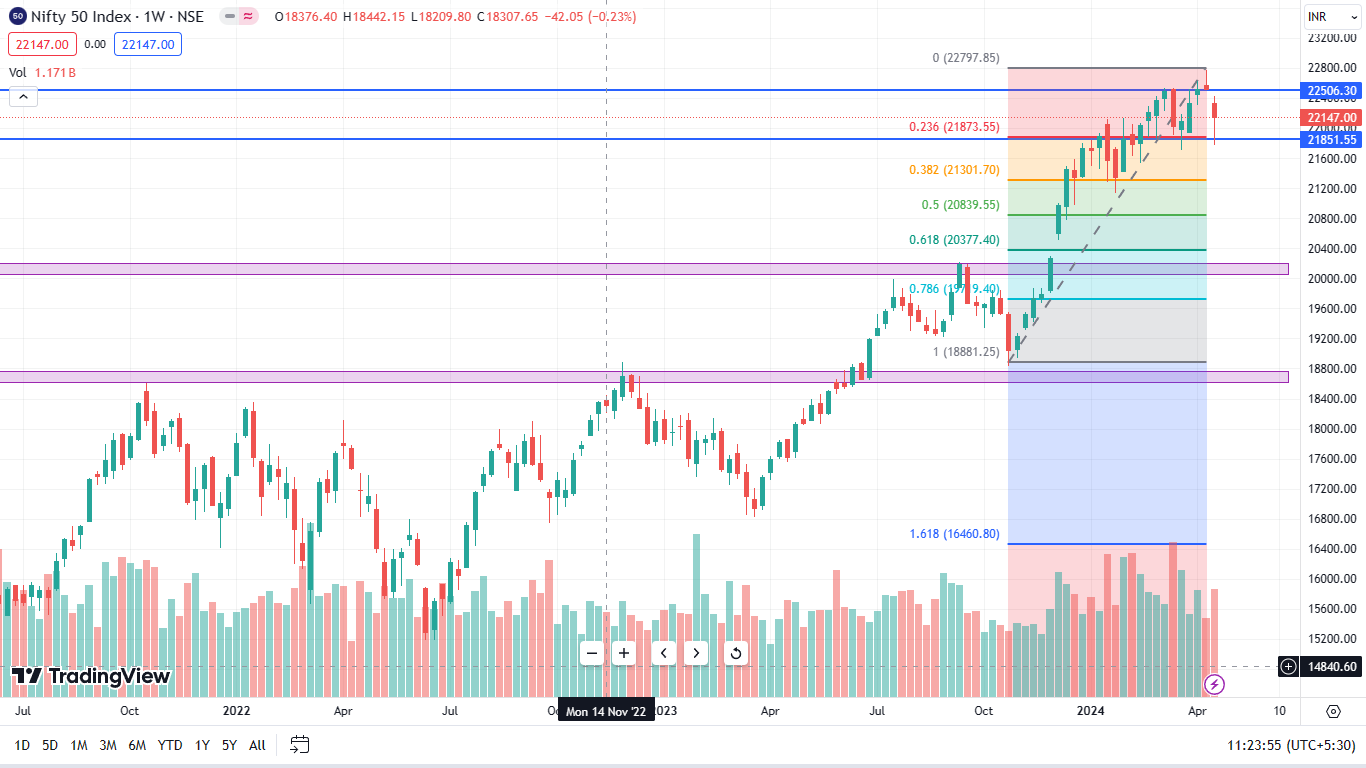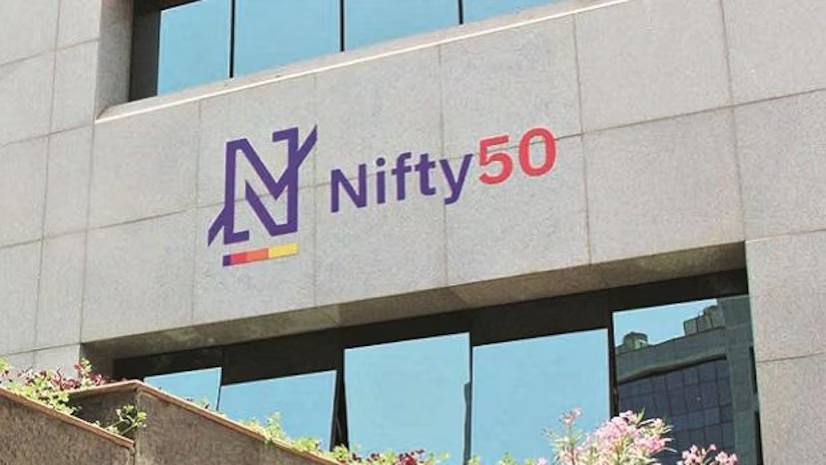The Landmark Story by Finshot
Mercedes-Benz sold 17,408 cars in India in 2023.
Now that doesn’t seem like much, we know. But it was the highest ever sales recorded for the German car maker in the country.
And that’s got Mercedes excited. They want to launch 12 new vehicles in India this year. And set up even more dealerships. All in the hope that with the burgeoning demand, India will drive into its top 3 markets under the Region Overseas classification. For context, we are in the fifth spot out of 118 countries on that list currently.
Now you might be wondering, “Hey Finshots, you talk about stocks listed on the stock exchange on Saturdays. Mercedes doesn’t fit that mould. So, what gives?”
Well, what if we told you there is a way to play the Mercedes-Benz India story?
And the way is Landmark Cars.
You might not have heard of them. But they’re the biggest car dealer or retailer for Mercedes-Benz in India! They have been selling Mercedes cars in India since 2008, have a market share of 16% in the country and currently have 21 outlets across west, central, and east India.
And they’re quite a crucial cog in the wheel for Mercedes.
See, the luxury carmaker cannot set up their own shop easily in different parts of the world. Its job is to manufacture the best cars. So it leaves it to an intermediary to interact with customers and create that first impression. This intermediary guides customers in the decision-making journey. They help with insurance and registration. They’re the ones who even glean customer insights and relay it back to the carmaker who can then make tweaks or improvements to its models.
So deciding to team up with a dealer is quite a crucial decision for any carmaker. They need someone with proven skills. And Mercedes found that in Landmark.
Okay, but how does a dealer such as Landmark Cars even make money, you ask?
There are 5 parts to this.
#1: By selling new vehicles. Now this is where the big chunk of revenue comes from. Typically, the dealer buys vehicles or inventory from the carmakers. And when they sell the cars, they decide the price at which they can sell. They record the entire sale value as revenue. They make a commission of 3–5% for most cars and for luxury vehicles, it inches higher to 6–8%. But Mercedes Benz moved to an agency model in 2021. This means that Landmark Cars doesn’t need to take the risk of buying inventory anymore. It simply has to sell the car and earn a commission.
This makes for 77% of Landmark Cars’ revenue.
#2: Offering after-sales services. Once you buy a vehicle, you’ll have to take it to the dealership every once in a while, for a tune-up. Sure, you might get the first few services done for free, but after that, the costs add up quickly. And if you need some parts replaced due to wear and tear, that’s going to cost you a fair bit of money too. There’s a labour cost also associated with all this.
This creates a recurring revenue stream that makes up 20% of the top line. And it has grown at 20% year-on-year for Landmark Cars from FY14 to FY23.
#3: Tacking on accessories . If you’ve just bought a new car and want to spruce it up with some floor mats, seat covers, car covers, tyre inflators etc., you could end up buying all of this from the dealership itself. Maybe even things like a paint protection film. While it’s quite a high-margin business for the dealer, it doesn’t amount to much on the revenue front. It’s negligible.
#4: Offering financing and insurance. Dealers usually have tie-ups with banks and other financial institutions to make your buying journey smooth. That way you don’t have to run from pillar to post when you’re trying to get a loan. And they get a commission for facilitating this deal too. Then there’s insurance. Yup, 90% of customers don’t shop around for insurance when they’re buying a new car. They just go with what the dealer suggests. And again, the dealer gets up to 20% of the insurance premium as commission for luxury cars.
This makes up 1% of Landmark Cars’ revenues.
#5: Selling pre-owned vehicles. If you look up the websites of carmakers such as Mercedes Benz, you’ll see something called an ‘assured buy-back’. This simply means that subject to some T&Cs such as how many kilometres you drive each year, the dealer will buy back the car from you at a predetermined price. And once it’s in their inventory they can sell it to other customers who don’t want to splash the cash on a brand new car but want a certified car.
This segment is just 2% of Landmark Cars’ overall revenues right now but it’s a division that’s growing quickly. After all, Indians want luxury cars, but the younger demographic doesn’t seem hell-bent on buying spanking new ones.
And yeah, that’s how Landmark Cars makes money.

But wait…there’s a confession we have to make.
We might have misled you a tad bit by making it seem like Landmark Cars only sells Mercedes-Benz. The luxury carmaker accounts for less than 30% of Landmarks’ revenues. Sure, it’s the biggest partner, but the company deals with other carmakers across the spectrum too.
There’s Mercedes for luxury, Jeep for premium, Honda and Volkswagen for the mid-range, and BYD and MG Motors to play the EV segment too. They’ve even snagged Mahindra & Mahindra dealerships lately.




